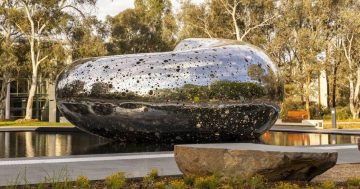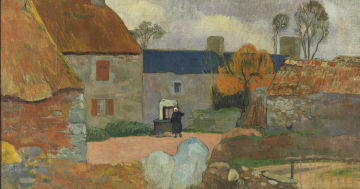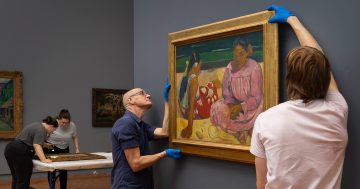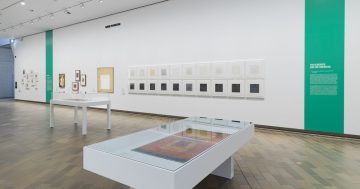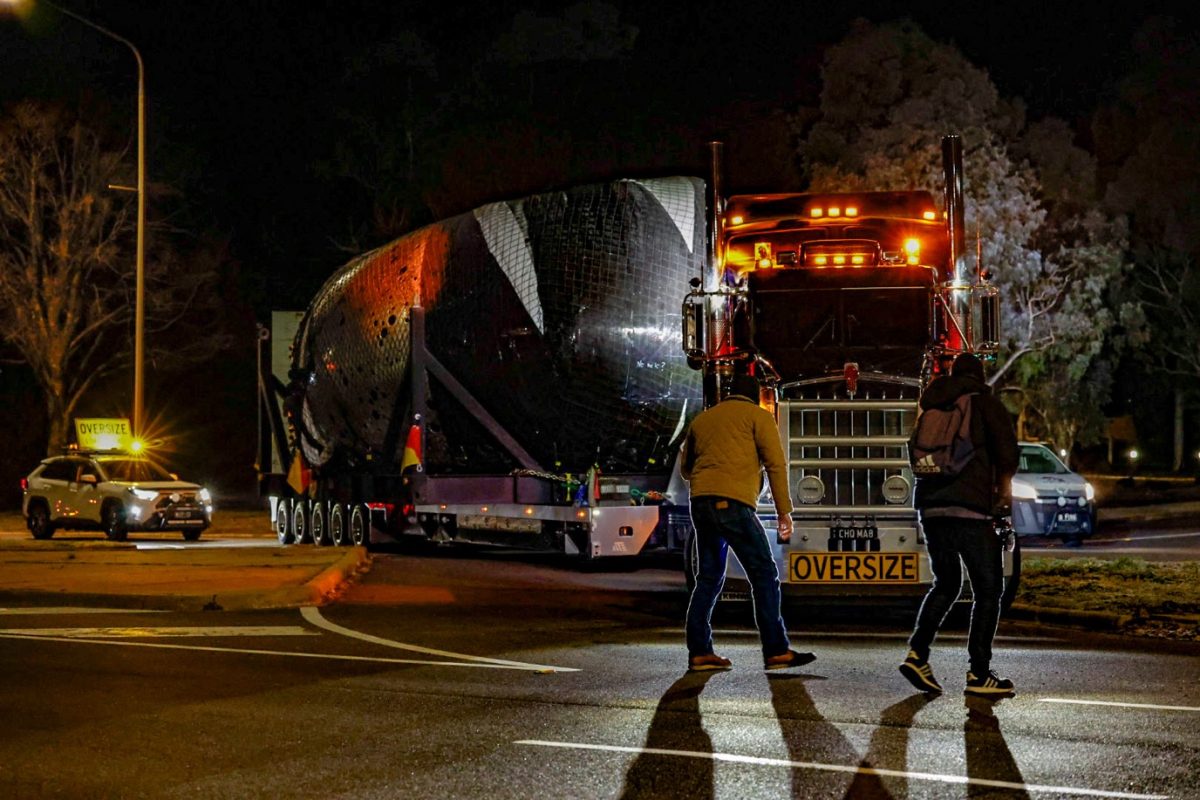
The oversized truck carrying the $14 million work of art, Ouroboros, is manoeuvred into the National Gallery of Australia in the early hours of this morning. Photo: NGA
For some, it looked like an alien craft moving into Canberra. For others, it was history in the making – the largest individual acquisition in the National Gallery of Australia’s (NGA) history, the $14 million Ouroboros sculpture – made a spectacular arrival at the NGA in the early hours of this morning (19 June).
The sculpture, all 13 tonnes of it, standing at four metres high and nine metres long, arrived in Canberra late yesterday.
It was rested just out of town so it could travel the last leg of its five-day journey from Queensland in the early hours of this morning to avoid causing traffic problems. Its creator, Australian sculptor Lindy Lee, travelled every kilometre with it in a meticulously planned journey that was months in the making.
Police escorts, road closures and very early morning starts, as well as, at times, driving on the wrong side of the road, allowed the work to safely cross three jurisdictions – Queensland, NSW and finally Canberra.
Because of its size – it is wider than a two-lane highway – street signs along the route had to be removed and even trees cut so it could get through.
Ouroboros, which was four years in the making, will be installed in the National Gallery forecourt. It was commissioned to celebrate the NGA’s 40th anniversary in 2022. At $14 million, it is the single largest investment in an artwork in Australian history.
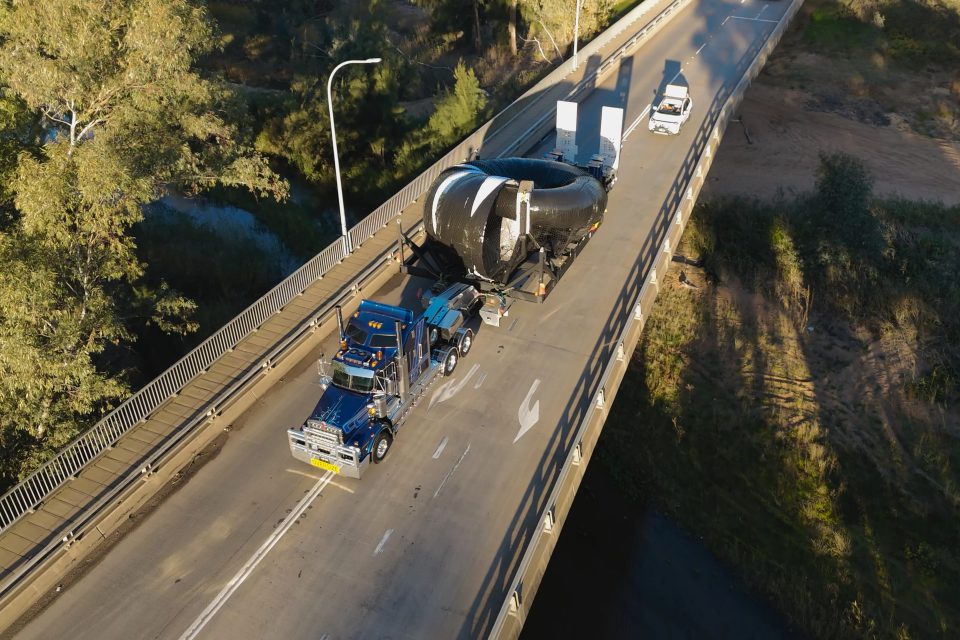
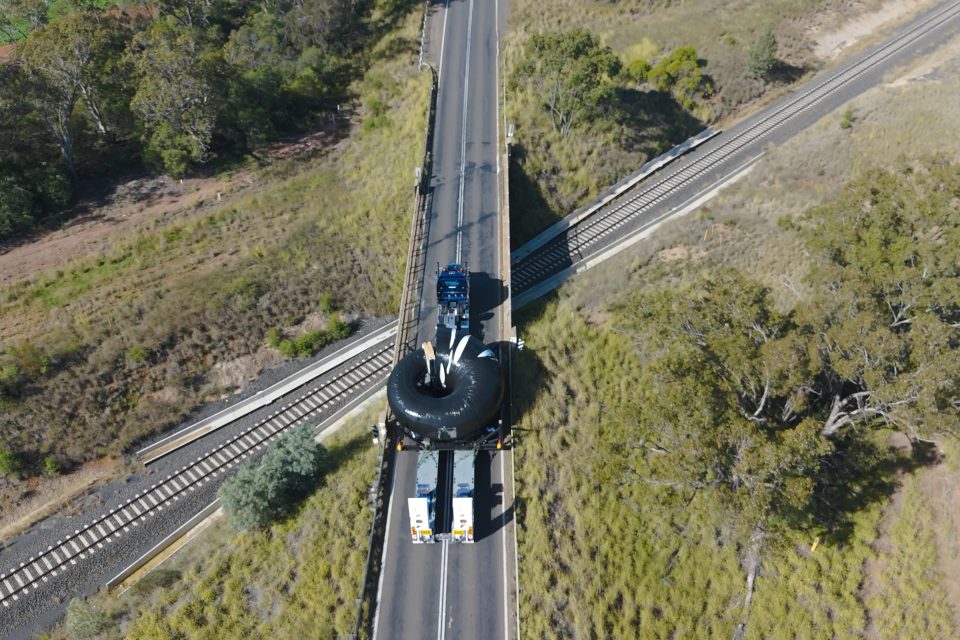
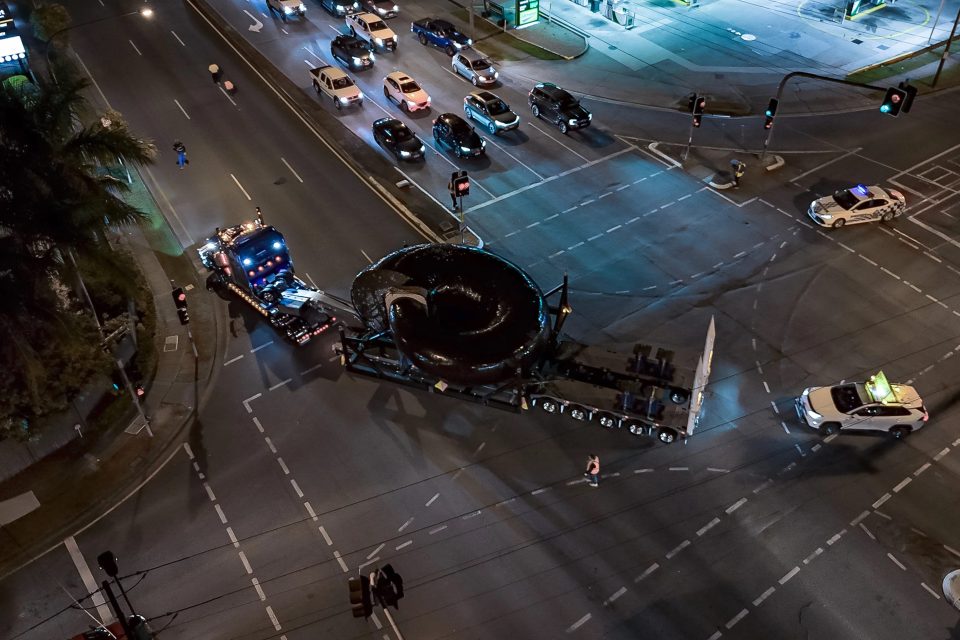
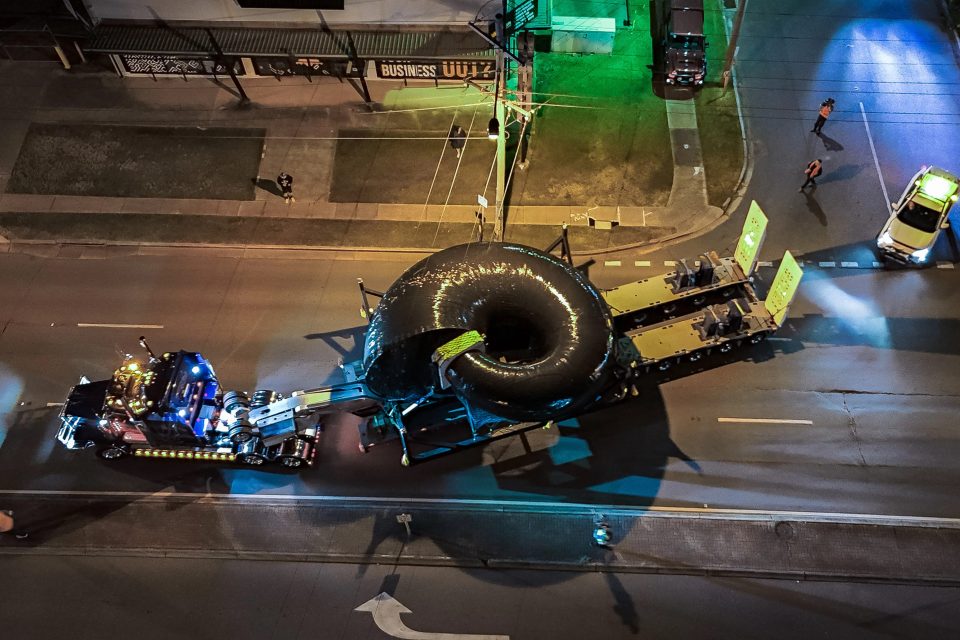
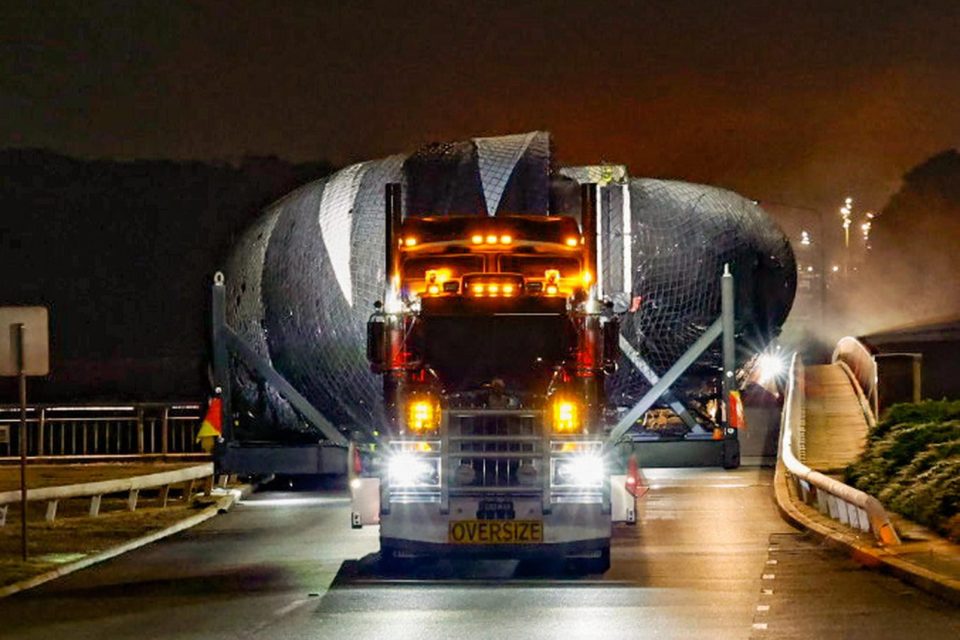
Director of the NGA, Dr Nick Mitzevich, welcomed the sculpture’s arrival, describing Lee as one of Australia’s most significant contemporary artists.
“Her boldness and creativity have shined throughout her 40-year artistic career,” he said.
‘The arrival of Ouroboros alongside her first solo exhibition at the National Gallery [in October 2024] and giving of the 2024 Annual Lecture is truly a momentous occasion.”
Fabricated at the UAP (Urban Art Projects) foundry in Brisbane, Ouroboros incorporates recycled materials, maximising renewable energy and work to minimise its carbon impact, helping make it one of Australia’s first sustainable works of public art.
Lindy Lee described her work as “a beacon”.
“Daytime or night-time, it’s going to pulse with light and energy,” she said.
She described her exhibition at the National Gallery later this year as a “meditative experience for audiences”.
“Penetration of the light into the dark speaks to the cyclical nature of Cosmos and the regenerative capacity of life on Earth,” she said.
“These perforations you see in … Ouroboros may also be read as wounds or imperfections. However, the old adage, ‘cracks are where the light gets in’, speaks to these openings and vulnerabilities, ultimately leading to healing, transformation and growth.”
Ouroboros is based on the ancient symbol of a snake eating its own tail – an image seen across cultures and millennia, the symbol of eternal return, of cycles of birth, death and renewal.

A delighted Lindy Lee arrives at the National Gallery in Canberra this morning. The artist accompanied her vast work all the way from Queensland in the five-day trip. Photo: NGA.
Through its location at the entrance of the NGA, visitors will be able enter the ‘mouth’ of the sculpture and walk into the curved space to experience darkness illuminated by light beams emanating from the hundreds of perforations on its surface.
During the day, its highly polished mirrored surface will reflect the imagery of the floating world, the transience of passers-by, cars, birds in flight and passing clouds. At night, the Ouroboros will be lit internally, returning its light to the world.
On arrival at the NGA this morning, the sculpture was lifted by crane into what will become its permanent position right at the front of the NGA. Additional work will be carried out prior to it going on display in October this year, including landscaping and a water feature.
Original Article published by Sally Hopman on Riotact.


